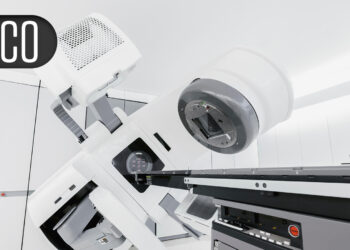TOPLINE:
Continuous glucose monitoring (CGM) with low-glucose alerts reduced the incidence of hypoglycemia while driving in insulin-treated drivers, and those with type 1 diabetes (T1D) showed improved time below range with these alerts.
METHODOLOGY:
- Despite recommendations to monitor blood glucose levels and consume glucose snacks before driving to reduce the risk for hypoglycemia, 34% of patients with diabetes never carried carbohydrates for correcting hypoglycemia, indicating that guidance on its management may be inadequate.
- Researchers in Japan conducted a randomized crossover study to evaluate the effectiveness of CGM with low-glucose alerts in preventing hypoglycemia in 27 insulin-treated patients with diabetes, including T1D and type 2 diabetes, (mean age, 61.9 years; 70% men) who drove a car at least thrice weekly.
- Participants had their glucose levels monitored and were randomly assigned into two groups: One using CGM devices in the usual mode with alerts during the alert period and the other using CGM devices in the blinded mode without alerts during the no-alert period, each for a 4-week period, with an 8-week washout period in between.
- Participants recorded driving times and completed questionnaires on their hypoglycemia experiences and alert system preferences.
- The primary outcome was the percentage of time below range (< 70 mg/dL or < 3.9 mmol/L), compared between alert and no-alert periods. Secondary outcomes included time above range (> 180 mg/dL or > 10.0 mmol/L), time in range (70-180 mg/dL or 3.9-10.0 mmol/L), and incidence of low-glucose events.
TAKEAWAY:
- The incidence of low-glucose events while driving was significantly lower during the alert period than during the no-alert period (19% vs 33%; P = .041). No significant differences were noted between the alert and no-alert periods for time below range, time above range, and time in range while driving.
- For patients with T1D, the time below range was lower during the alert period than during the no-alert period (treatment difference, −4.4%; P = .047).
- Moreover, the time above range was lower and the time in range was higher during the alert period than during the no-alert period (P = .038 and P = .007, respectively).
- Most participants found low-glucose alerts useful and took actions, including checking glucose levels and consuming glucose or food. No traffic accidents or incidents of severe hypoglycemia requiring assistance from others were reported.
IN PRACTICE:
“The [results] suggest that CGMs with low-glucose alert functions could further contribute to the safety of insulin-treated drivers and support the relaxation of driving restrictions for these patients,” the authors wrote. “CGM with low-glucose alerts has shown potential to reduce the risk of hypoglycemia for insulin-treated drivers. These systems are expected to make driving safer for people with diabetes,” they added.
SOURCE:
This study was led by Ryutaro Maeda, Nagoya University Graduate School of Medicine in Nagoya, Japan. It was published online in Diabetes Research and Clinical Practice.
LIMITATIONS:
Participants’ behavior might have been influenced by using CGM devices, potentially underestimating hypoglycemia risk. The 15-minute intervals of glucose measurements may have missed short-duration hypoglycemia events. The 4-week intervention period was too short to fully capture the risk for hypoglycemia while driving.
DISCLOSURES:
This study was supported by Abbott Diabetes Care and by grant related to traffic accidents from the General Insurance Association of Japan. Two authors declared receiving financial support and having other ties with the funding sources.
This article was created using several editorial tools, including AI, as part of the process. Human editors reviewed this content before publication.
Source link : https://www.medscape.com/viewarticle/driving-diabetes-let-your-cgm-take-wheel-2025a10007w3?src=rss
Author :
Publish date : 2025-04-02 10:21:00
Copyright for syndicated content belongs to the linked Source.














